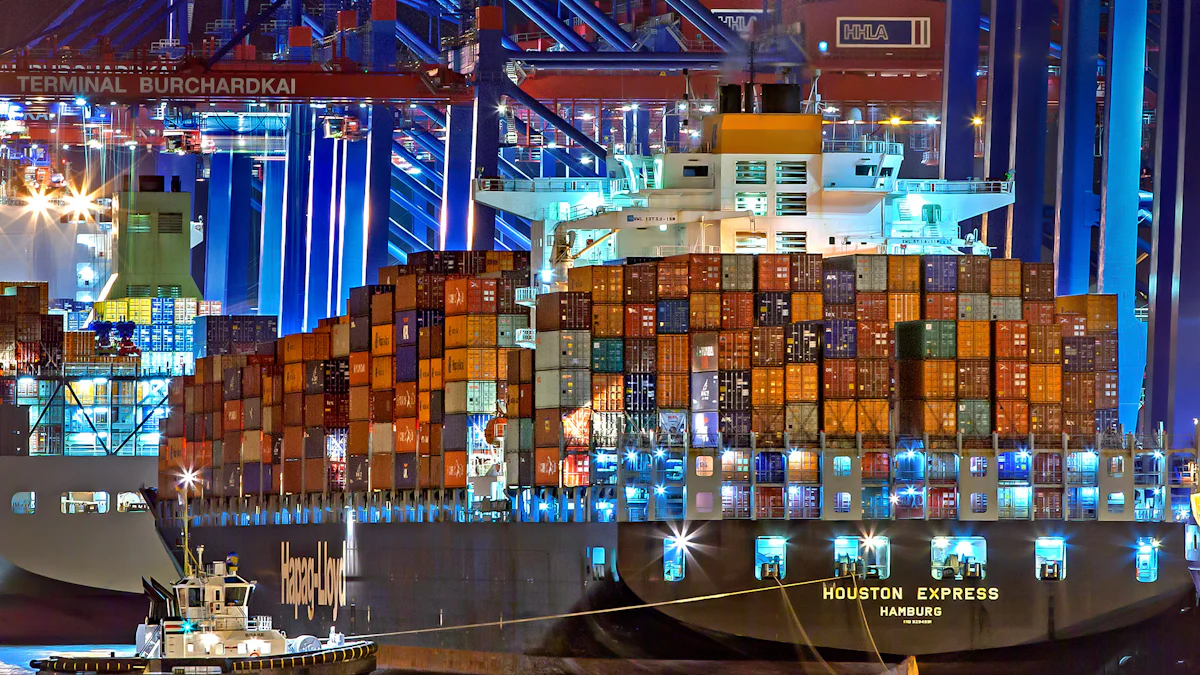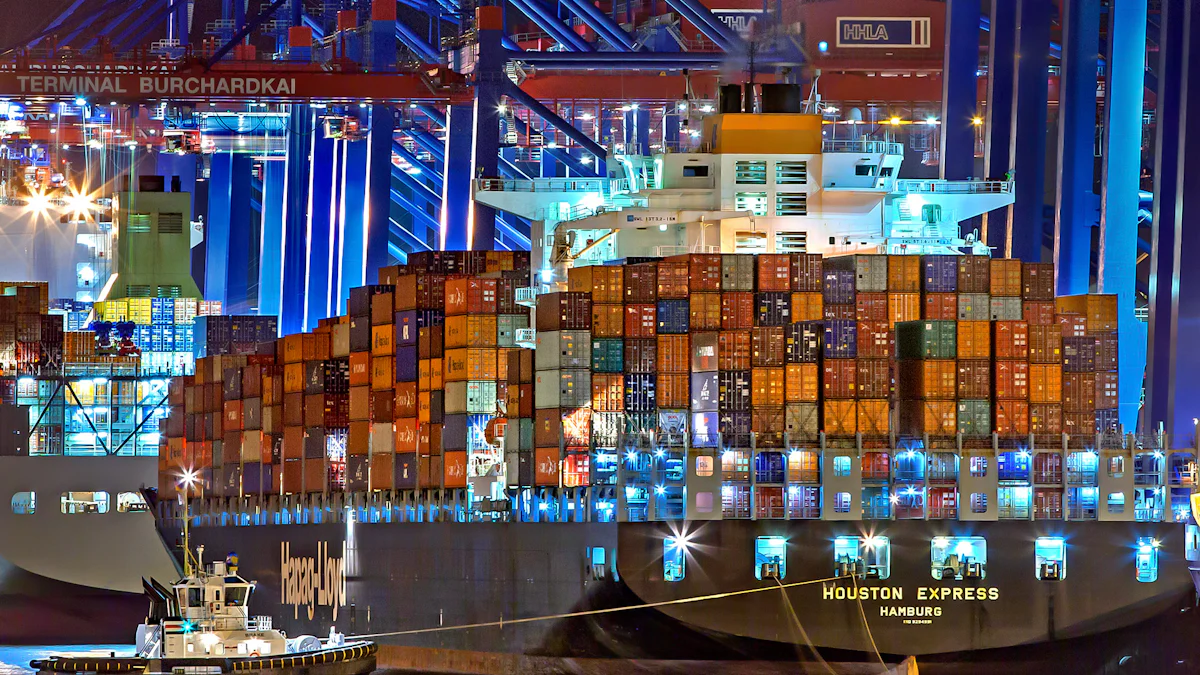Global Trade Compliance Explained: A Complete Guide

Global trade compliance holds critical importance for businesses engaged in international commerce. Compliance ensures adherence to domestic and international trade rules, regulations, and laws. The regulatory landscape constantly evolves as nations adjust sanctions policies to address current foreign affairs. Non-compliance can lead to severe consequences, including fines up to $1 million per violation in criminal cases and administrative penalties amounting to the greater of $250,000 or twice the transaction value. Businesses may also face criminal charges and significant reputational damage.
Understanding Global Trade Compliance

Definition and Scope
What is Global Trade Compliance?
Global trade compliance refers to the adherence to rules and regulations governing international trade. These rules ensure that trade activities align with legal, ethical, and safety standards. Government agencies establish these regulations to promote fair and secure trade practices. Businesses must follow these guidelines to avoid legal repercussions and maintain their reputation.
Key Components of Trade Compliance
Global trade compliance encompasses several key components:
Import Compliance: Ensures that imported goods meet all regulatory requirements.
Export Compliance: Guarantees that exported goods adhere to the laws of both the exporting and importing countries.
Import and Export Controls: Involves managing licenses, permits, and other documentation necessary for legal trade operations.
Regulatory Bodies and Frameworks
International Regulatory Bodies
Several international bodies oversee global trade compliance:
World Trade Organization (WTO): Sets global trade rules and resolves disputes between member countries.
International Chamber of Commerce (ICC): Provides guidelines and standards for international trade practices.
United Nations Conference on Trade and Development (UNCTAD): Promotes development-friendly integration into the global economy.
National and Regional Regulations
National and regional regulations play a crucial role in global trade compliance:
U.S. Customs and Border Protection (CBP): Enforces U.S. trade laws and regulations.
European Union (EU) Customs Union: Harmonizes customs procedures across EU member states.
China Customs: Regulates imports and exports to ensure compliance with Chinese trade laws.
Key Concepts in Trade Compliance
Export Controls
Export controls restrict the transfer of certain goods, technologies, and services. These controls aim to protect national security and foreign policy interests. Businesses must obtain the necessary licenses and permits before exporting controlled items.
Import Regulations
Import regulations ensure that goods entering a country comply with local laws. These regulations cover product safety, environmental standards, and tariff classifications. Accurate documentation and proper tariff classification are essential for smooth customs clearance.
Sanctions and Embargoes
Sanctions and embargoes impose restrictions on trade with specific countries or entities. These measures aim to achieve foreign policy objectives and maintain international peace and security. Businesses must stay informed about current sanctions and embargoes to avoid legal penalties.
Conducting Due Diligence
Risk Assessment
Identifying Potential Risks
Identifying potential risks forms the foundation of effective global trade compliance. Businesses must evaluate various factors that could impact trade operations. These factors include geopolitical instability, regulatory changes, and economic sanctions. Companies should also consider the reliability of supply chain partners. A comprehensive risk assessment helps in anticipating challenges and preparing appropriate responses.
Risk Mitigation Strategies
Risk mitigation strategies involve proactive measures to address identified risks. Companies can implement policies to ensure compliance with trade regulations. Regular training programs for employees enhance awareness of compliance requirements. Automated systems can streamline compliance processes and reduce human error. Continuous monitoring of trade activities ensures adherence to regulations. Effective risk mitigation minimizes potential disruptions and legal repercussions.
Screening and Verification
Customer and Supplier Screening
Customer and supplier screening is crucial for maintaining compliance in international trade. Businesses must verify the legitimacy of trading partners. Screening involves checking against government watchlists and sanctions databases. Automated compliance tools can facilitate this process. For example, automated screening helped a company avoid trading with restricted parties in Belarus. Thorough screening prevents illegal transactions and protects the company's reputation.
Product Classification and Verification
Product classification and verification ensure that goods comply with import and export regulations. Accurate classification involves assigning correct tariff codes to products. This process determines applicable duties and taxes. Verification ensures that products meet safety and environmental standards. Proper documentation supports smooth customs clearance. Businesses should regularly update product classifications to reflect regulatory changes. Accurate classification and verification prevent delays and penalties in trade operations.
Documentation and Record-Keeping

Essential Documentation
Import/Export Licenses
Import and export licenses play a crucial role in global trade compliance. An import license ensures that imported goods meet all regulatory requirements. Failure to obtain a required import license can lead to problems with customs in the destination country. Including a copy of an import license with documentation may help avoid these issues.
An export license determines if items require an export license based on technical characteristics, destination, end user, and end use. Local country export licensing requirements vary. A formal export license issued by the local 'ship-from' country may be required for specific Export Control Classification Numbers (ECCNs). Failure to obtain a required export license can result in significant fines, restrictions on future exports, and even jail time.
Shipping and Customs Documents
Shipping and customs documents ensure smooth customs clearance and compliance with trade regulations. Essential documents include:
Bill of Lading: A legal document between the shipper and carrier detailing the type, quantity, and destination of the goods.
Commercial Invoice: A document provided by the exporter that details the transaction between the buyer and seller.
Packing List: A document that itemizes the contents of each package in a shipment.
Certificate of Origin: A document certifying the country where the goods were manufactured.
Customs Declaration: A form submitted to customs authorities detailing the nature of the goods being imported or exported.
Accurate and complete shipping and customs documents facilitate compliance with import and export regulations and prevent delays and penalties.
Best Practices for Record-Keeping
Maintaining Accurate Records
Maintaining accurate records is essential for ensuring compliance with trade regulations. Accurate records provide a clear audit trail and support compliance efforts. Key practices for maintaining accurate records include:
Regular Updates: Ensure that all records are regularly updated to reflect current information.
Consistent Formatting: Use consistent formatting for all records to facilitate easy retrieval and review.
Verification: Regularly verify the accuracy of records to identify and correct any discrepancies.
Accurate records help businesses demonstrate compliance during audits and inspections.
Document Retention Policies
Document retention policies outline how long records should be kept and how they should be stored. Effective document retention policies ensure that businesses retain necessary records for compliance purposes. Key elements of document retention policies include:
Retention Periods: Specify the retention periods for different types of records based on legal and regulatory requirements.
Storage Methods: Outline the methods for storing records, including physical and electronic storage options.
Disposal Procedures: Define procedures for the secure disposal of records that are no longer needed.
Adhering to document retention policies helps businesses manage their records efficiently and ensures compliance with trade regulations.
Implementing Internal Controls
Compliance Programs
Developing a Compliance Program
Developing a robust compliance program forms the backbone of effective global trade compliance. Organizations must embed control systems across multiple departments, including legal, operations, and sales. This approach decreases the chances of violating national and international trade rules. A comprehensive compliance program typically includes:
Policy Development: Establish clear policies that outline compliance requirements.
Procedure Implementation: Implement procedures to ensure adherence to these policies.
Responsibility Assignment: Assign specific responsibilities to individuals or teams for managing compliance tasks.
Resource Allocation: Allocate necessary resources, such as technology and personnel, to support compliance efforts.
Trade Compliance Expert: "Effective trade compliance typically requires that an organization embed its control systems across multiple departments (like legal, operations, and sales) to decrease the chances of running afoul of national and international trade rules."
Training and Awareness
Training and awareness programs are critical tools for mitigating risks associated with trade compliance violations. Employees need knowledge and skills to understand and adhere to regulations. Regular training sessions should cover:
Regulatory Updates: Inform employees about changes in trade laws and regulations.
Compliance Procedures: Educate employees on internal compliance procedures and their roles in maintaining compliance.
Case Studies: Use real-world examples to illustrate the consequences of non-compliance.
Trade Compliance Expert: "Comprehensive training is a critical tool for mitigating the risks associated with trade compliance violations. By providing employees with the knowledge and skills they need to understand and adhere to the regulations, businesses can reduce the risk of violations and demonstrate compliance."
Monitoring and Auditing
Regular Audits and Reviews
Regular audits and reviews ensure ongoing compliance with trade regulations. These activities help identify gaps in compliance programs and provide opportunities for improvement. Key elements of effective audits include:
Audit Schedule: Establish a regular schedule for conducting audits.
Audit Scope: Define the scope of each audit to cover all relevant aspects of trade compliance.
Audit Team: Assemble a team with expertise in trade regulations and compliance procedures.
Trade Compliance Expert: "Adherence to trade compliance best practices is also important for in-country transfers of goods manufactured abroad. But international trade compliance is quite complex."
Continuous Improvement
Continuous improvement involves regularly updating compliance programs based on audit findings and regulatory changes. Organizations should:
Implement Recommendations: Act on recommendations from audit reports to address identified gaps.
Update Policies: Revise policies and procedures to reflect changes in trade regulations.
Enhance Training: Update training materials and programs to incorporate new compliance requirements.
Continuous improvement ensures that compliance programs remain effective and responsive to evolving regulatory landscapes.
Global trade compliance remains essential for businesses. Adhering to regulations helps avoid severe penalties and reputational damage. Key points include:
Understanding Compliance: Grasp the scope and importance of global trade rules.
Conducting Due Diligence: Implement risk assessments and screening processes.
Maintaining Documentation: Keep accurate records and follow best practices.
Implementing Controls: Develop robust compliance programs and conduct regular audits.
Ongoing compliance efforts prove vital. Businesses must stay informed about regulatory changes. Proactive measures ensure smooth international trade operations.
See Also
Unveiling the Definitive Guide to International Logistics Firms
Ensuring Supply Chain Excellence: A Comprehensive JUSDA Guide
Navigating Risks: An Effective Guide to Supply Chain Management
Conquering Supply Chain Challenges: An In-Depth Manual
Achieving Sustainability: A Comprehensive Transportation Guide
